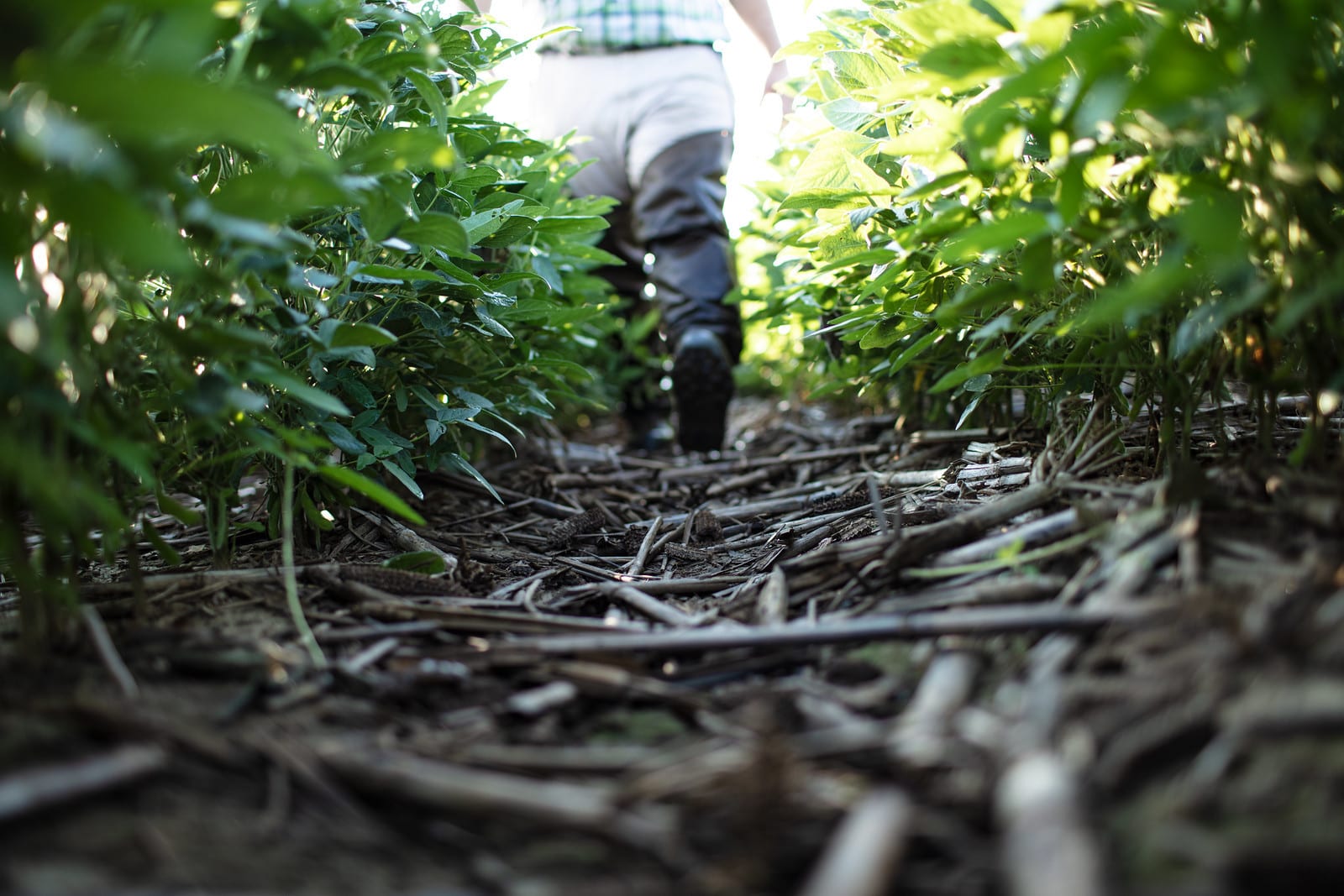U.S. soybean farmers are the CEOs of their farm business. Like other CEOs, they implement sustainable practices that produce the best environmental and economical outcomes for their business.
One sustainability practice on the farm that holds many advantages for farmers and their customers is tillage — preparation of soil for planting — often by turning over the crust to aerate and break up old plant growth.
Historically, row crop farmers plowed their fields after harvest and before planting. During the last 30 years, though, many farmers have broken this cycle and started following a practice focused on reducing erosion and building soil health called no-till.
No-till farmers don’t plow after harvest. Instead, they leave the field and soil undisturbed. The biomass made up of residue from the previous crop insulates the soil, and avoiding trips across a field with heavy equipment reduces soil compaction. Both of these help retain moisture, minimize erosion and promote soil health over time, according to the U.S. Department of Agriculture. Additionally, no-till and conservation tillage reduce equipment, fuel, maintenance and labor costs by eliminating trips through the field.
Cory Atkins, a grain and vegetable farmer from Seaford, Delaware, has a “never-till” mindset. He does not till any of his soybean fields and has recently implemented no-till practices on a few vegetable crops.
“For my farm, no-till was a no-brainer,” he said. “I didn’t need the equipment. I didn’t need the manpower.” USDA data confirms Atkins’ experience. USDA reports:
- A farmer who implements no-till practices and plows 15 acres per hour saves roughly 67 hours of work with each pass eliminated over a 1,000-acre field compared to farmers who till their land.
- A farmer with 1,000 acres of crops who switches from continuous conventional till to continuous no-till saves 4,160 gallons of diesel fuel — more than $8,500 worth — each year (assuming the average off-road diesel fuel price of $2.05 per gallon).
Conventional tillage requires specialized equipment and increases time spent in the field — things that Atkins saves on by adopting no-till practices in addition to the environmental and productivity benefits.
No-till increases sustainability for the supply chain
Like Atkins, David Wessel, a farmer from central Illinois, incorporates no-till on his farm.
Wessel said he has practiced no-till methods on his farmland for 35 years. He uses no-till to minimize soil and nutrient loss due to erosion.
“A lot of our reasoning for no-till was because of soil erosion. We have some pretty rough ground that’s highly susceptible to erosion,” Wessel said. Factors like soil compaction, low amounts of organic matter, poor drainage and steep inclines can accelerate the soil erosion process.
“On land where we first implemented no-till practices, the erosion is down to zero,” Wessel continued. “For 20 years now, thanks to no-till, soil on my land stays in place and doesn’t wash away.”
Conventional tillage causes stress to the soil structure, compressing the pockets where air and water can infiltrate. In contrast, no-till farmers often see less soil compaction because of the reductions in field traffic and soil disturbance.
No-till also allows natural material left on a field after harvest to remain on the soil surface during decomposition, forming a protective layer and further protecting the soil from wind and water erosion. This increases retention of the nutrient-rich organic matter and ultimately increases soil health, which leads to healthier plants and typically higher yields while using the same amount of land.
U.S. Soy passes sustainability from the farm onward to its end-use customers and eventually consumers. Like other CEOs, U.S. soybean farmers take their stewardship of the land seriously to build a sustainable business that is the foundation of a sustainable supply chain.
U.S. Soy helps make whatever you make more sustainable. Steps to improve sustainability are taken throughout the soy value chain to create an environmentally-friendly product for end users to sell to consumers. Farm practices such as precision agriculture, pesticide-resistance management, reduced tillage, buffer strips and more all positively impact environmental goals including water quality, soil health and greenhouse gas emissions.
Visit unitedsoybean.org/sustainability-report to download the Soy Sustainability Report.
